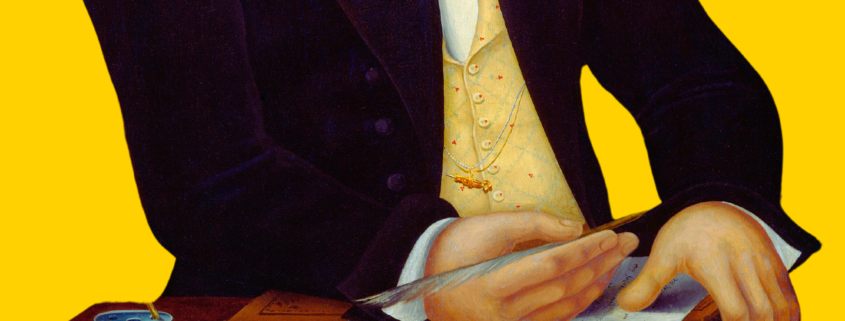Enhance Desire for Art: From Status Quo to New Life
A patron is a customer, and a good one at that. Museums are in that category too. If we allow ourselves to see that even as artists we are in business, we can utilize the tools of business to grow our creative practice. We need to communicate that we exist to enhance desire for art—our art.
We may not like to see ourselves as marketers or even worse, sales people, but we are. Being good at business means more time in the studio.
Thankfully we don’t have to come up with new concepts in sales and marketing in the same way that we do for our masterpieces. We can harness the hard work of folks who study messaging to build our strategy and develop our plan. Billy Broas has provided a simple framework to do just that. The five lights bulbs are a powerful blend of obvious, versatile and easy to implement for any business to build an effective messaging strategy.
A critical step in any relationship is to recognize where someone is at. If we don’t know where someone is presently at in their journey through life, it is hard to intersect and connect with them. Your voice is heard when it is directed to where someone is. In the case of a customer the two locations we are most interested in are the starting and ending position, pre- and post- acquisition of your art.
The two light bulbs that speak to these two places are the customer’s status quo and new life.
Market New Life
It might be easier to think about the new life first. The post-acquisition experience includes the value your work brings to the audience—and your work has a litany of value. A deep eye roll may be warranted but we need to get serious about considering the “value” of art, more particularly your art. Your art enriches others by offering new perspectives. It expands thinking. Your art enhances feelings others chase. Potentially, your art is pleasing to the eye.
Not to mention, someone owning your art titillates your senses too. Joy is a mystery of present science in that it isn’t conserved. Giving joy to others also brings joy to the giver.
The new life your customer will have with your art might be:
- Nuanced, with added perspectives
- Vibrant and playful
- Confident and powerful
- Elevated in status, envied by peers
- Filled with beauty
Your audience will experience something with your work and you can communicate through your “marketing”—words and images. Good messaging should enhance desire for art by showing your audience the present for what it is and a path towards a new life that includes your work.
Upset Status Quos
If you have clarity on the new life that your audience will have with your work, you likely have some idea of what is missing in their present status quo. Their walls are boring. Their mental framework may have gaps in understanding. They may be missing the fullness of a life of emotion. They may not be seen by others. Your message can kindly (or not) remind folks of where they are presently.
The status quo of your customer without your art might be:
- A home devoid of energy
- Unable to say what’s on their mind
- Eager to express frustration but unable
- Sensing others don’t understand them
- Feeling less then on top of the world
Your work is incredibly valuable if your customer is in a place like this. You can bring them out of it. Although this list feels sad and salesy, with some thoughtfulness about your value you can find messaging that empathetically speaks to your audiences’ lot in life, and shows them you want to help them move to a better place.
It’s sometimes hard to express how, but your work adds value to the world. The better you can communicate how it upsets the status quo, and creates new life for your audience, the less salesy “marketing” will feel.
Better messaging is a critical part of converting inventory on the floor into artworks on someone’s wall.
Keep Going
Do you want to move beyond the frustration of seeing your artwork not sell? Read on for more social media strategies to enhance desire for art—your art—and take you towards a more sustainable business and more time in the studio.
You can also join the Burkholder Agency for our next Marketing Monday session. We work with you to let people know your great art exists and increase the desire your audience has for it.
Banner art credits: Textile Merchant, c. 1840 is an oil on canvas work by an unknown American 19th Century artist. The piece is presumably a commissioned portrait of an unknown textile merchant from the Northeast. It is a good example of the style of American primitive painting, although “primitive” is an unnecessarily diminutive classification. The paintings appear flat because of the figuration and consistent (unrealistic?) lighting in addition to the fascination with background details, even if they distract from the subject.



